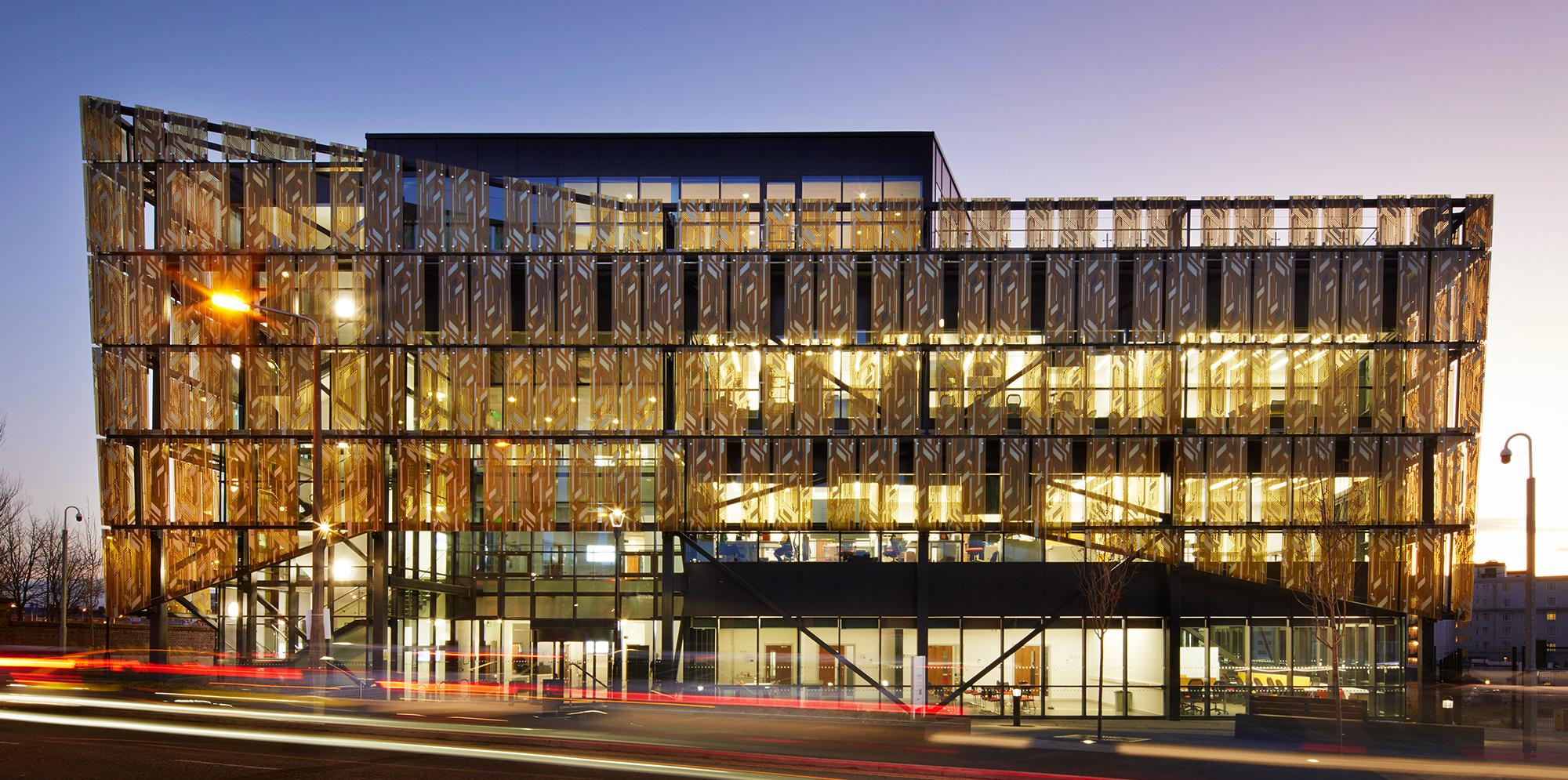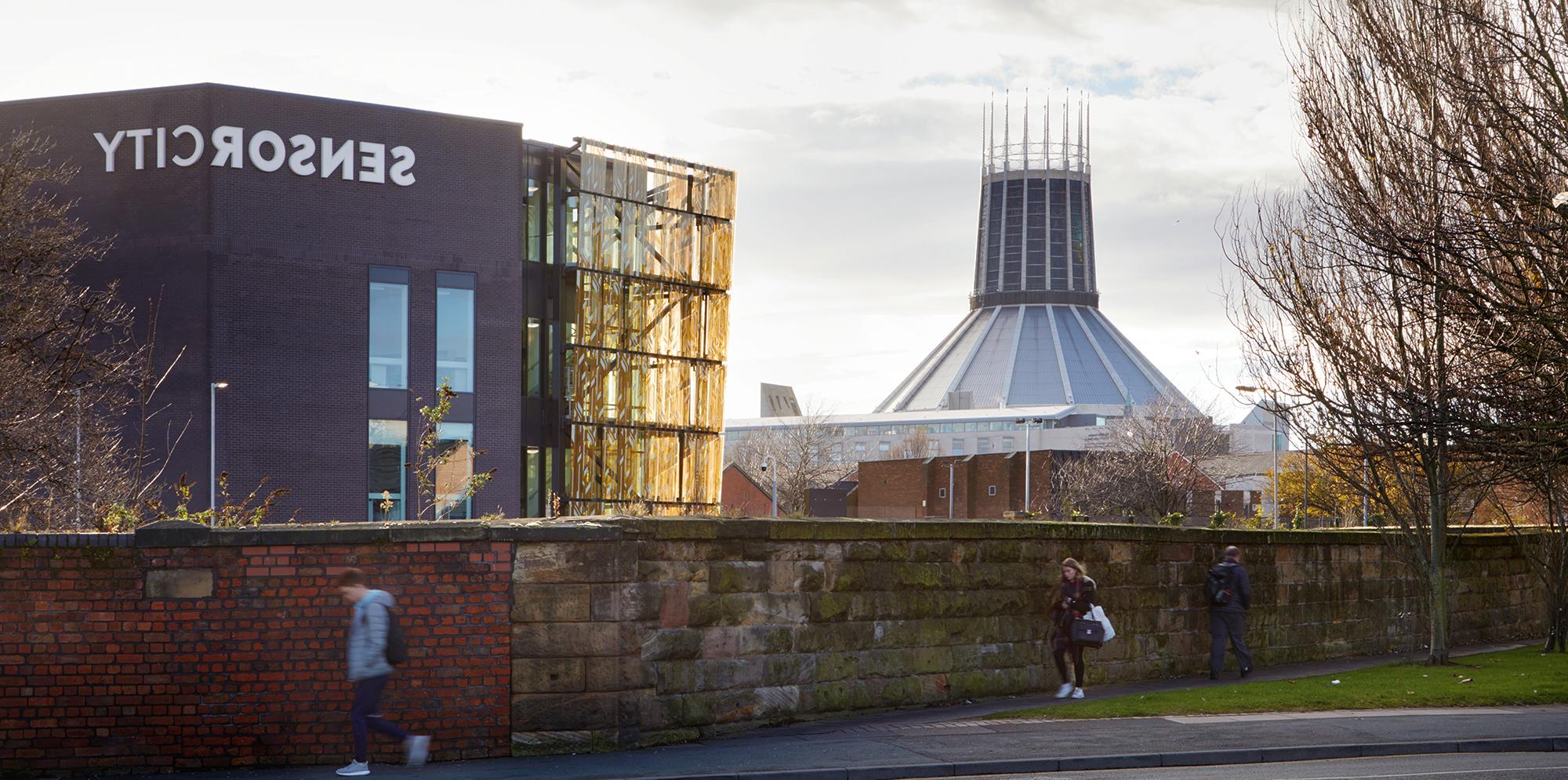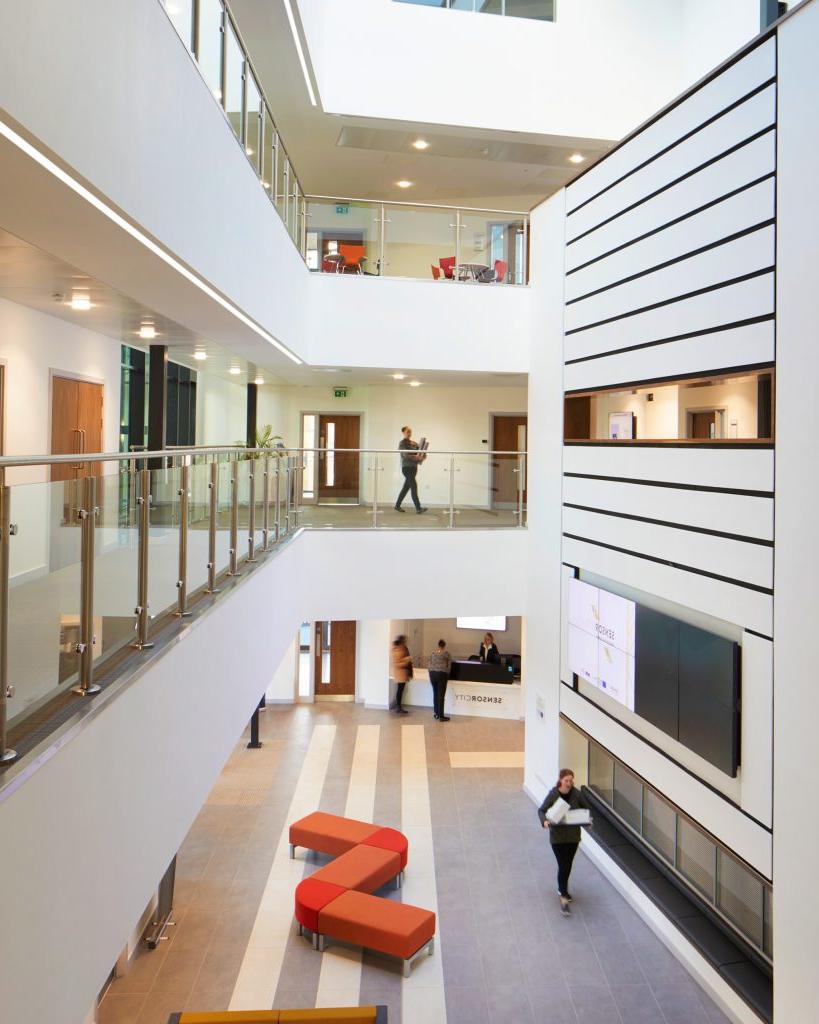Liverpool is home to some of the world’s leading innovators in digital sensor technologies, and Sensor City represented an opportunity to unite the field’s brightest minds within a flexible, shared space. Our design needed to express the same degree of ingenuity and collaboration that was occurring inside.
Our design process was deeply informed by engagement workshops with Liverpool University, Liverpool John Moores University, and industry stakeholders who helped us refine our vision and develop a design that truly reflects Sensor City’s commitment to scientific progress and technological innovation.
The architectural form creates a robust aesthetic to the north and west elevations, juxtaposed against a transparent, lightweight facade arranged to the south and west to create an open and accessible feel.
Sustainable design principles greatly influenced the form, with tall floor-to-floor heights for natural ventilation and night time cooling of exposed concrete soffits. A striking enameled veil provides solar shading to the south and east, doubling as a beautiful public art installation within the heart of the Knowledge Quarter.
Esteemed glass artist Julian Stocks led the design of these enamel elements in conjunction with Arino of Spain, creating a holographic appearance of digital sensors. Meanwhile, large digital display surfaces within the atrium showcase active research programs in real time to inspire everyone who visits.
Most importantly, this open and interconnected design enables greater collaboration and shared discovery between researches and developers. A truly modern work-share that puts the greater mission ahead of individual successes.







